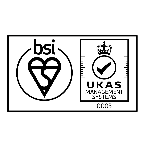
Working for your safety
Keith Tonge, from the Lifting Equipment Engineers Association (LEEA) Technical Services, explains how the variety of safety devices used during lifting operations work to prevent accidents, injuries and damage to equipment.
A variety of safety devices exist to limit the amount of movement of a lifting appliance, protecting it from the worst effects of overloading or to protect the appliance itself. If a device is essential for safe use it will be fitted as standard but if it provides additional features for safety, it may only be provided as an optional extra. If so, then check the manufacturer’s specification. Let’s take a look at some of these devices.
Motion limits
Power operated wire rope hoists are required to have an upper (hoisting) limit. This prevents the bottom hook travelling up into the hoist body, resulting in the wire rope breaking and the load being dropped.
As for the bottom limit, prior to modern requirements it was not a mandatory requirement, but if a hoist without a bottom limit is over-lowered, the rope can wind onto the drum in the reverse direction. This will result in the reversal of motion control sense and the non-operation of the upper limit. Similar limits are advisable on power operated chain hoists.
Most in-service power operated wire rope and chain hoists have both upper and lower limits as standard but in the now rare case of a power operated hoist found in-service without a bottom limit, it is advisable to fit one. However, unless the power operated hoist is modified or taken into a new undertaking, then this advice is not mandatory and in the case of winches not normally fitted with motion limits, additional precautions are necessary.
To prevent over-winding, ensure that the bottom hook reaches the floor before the rope is fully paid out and that the rope is marked with a visual indicator, for example a coloured marker, to warn the operative that the maximum travel has been reached.
Safety devices are becoming increasingly more advanced and in many cases they can be retrofitted to existing lifting appliances. It is worth continually assessing older in-service equipment and fitting such devices appropriate to any identified risk.
Hoisting and lowering limits are a form of safety device intended for occasional use only. In some cases, limits may require manual resetting before further operation is possible. They must not be used as a means of positioning the bottom hook. In applications where this is necessary, such as a production line, additional limits, known as working limits, should be considered. These are of a heavy-duty type intended for regular use and are available as an optional extra.
In the case of power operated travelling appliances, the runways and tracks to which they are fitted must be provided with positive end stops to prevent the appliance running off the end of the track or colliding with the supporting structure. Again, these are ultimate safety devices and are not intended for regular use or to position the appliance. Various types of travel limits are available for applications requiring the appliance to be positioned on the track or prevent the appliance travelling beyond a specified area of the track. These are available as an optional extra.
Anti-collision and approach limiting devices
Where more than one travelling appliance is fitted to the same track, it is necessary to prevent collision or it may be necessary to prevent more than one of the appliances entering a specified area of the track. This can be achieved in several ways, the choice of which will to some extent depend on the application.
Manually operated travelling appliances, and indeed certain power operated appliances, can be fitted with extended arms and simple buffers that limit the approach of the appliances. To prevent collision or limit the approach of power operated travelling appliances, sensor switches may be fitted to the appliances. Various types are available ranging from simple trigger switches, which are mechanically operated to disconnect the power and isolate selected areas of the track, to infra-red and microwave sensors that disconnect the approach travel motions when the set distance between the units is reached. These devices permit the movement of the appliances in the reverse direction and automatically reset once the distance between the units exceeds that for which they are set.
Overload protection
The simplest form of overload protection used on manually operated appliances is the shear pin. This is used on lifting and pulling machines that use a gripping action on the wire rope and similar appliances to prevent excessive effort being applied to the operating lever.
Slipping clutches are sometimes used in power operated chain hoists and may also be found on some manually operated equipment. They are set to slip when the load increases beyond a predetermined amount. Slipping clutches are also used in some designs of lifting appliances as the upper (hoisting) limit, thereby serving a dual purpose.
A wide variety of overload protection devices are used to protect the electrical systems of electric power operated appliances. They operate to disconnect the supply if physical or electrical overloading occurs. In some cases, it may be necessary to reset the device manually before further operation is possible whilst others automatically reset after a period of time or when the overload is removed. The primary purpose of electro-magnetic and thermo-electric devices is to prevent damage by electrical overload. They will therefore permit an excessive load to be lifted for some distance before they operate.
Load measuring or sensing devices are used to prevent physical overload by stopping the appliance operating if the load exceeds that intended. Since improvements to safety legislation and standards, they have become a standard feature of many appliances.
In all cases of electric power operated appliances, fuse protection must be provided in the supply system.
Although pneumatic motors stall to safety, pneumatic appliances may include a device that uses pressure springs or washers. These compress under load and, if the design load is exceeded, they open a vent valve that carries the air supply to the exhaust stopping the motor from operating.
Hydraulic appliances utilise pressure relief valves to release the internal pressure in a system once this exceeds the design maximum, thereby preventing further operation until the load is reduced.
Warning devices
It is often sufficient to paint or mark travelling or moving appliances, which can present a hazard to personnel, in distinctive colours to ensure that they are clearly visible. The use of warning lights and/or audio alarms should be assessed and incorporated where necessary to mitigate risk.
Safety in lifting operations is paramount and these devices are key allies, together with adhering to regulations and guidance, in ensuring the prevention of accidents, injuries and equipment damage during the handling of heavy loads. For further guidance consult the LEEA Code of Practice for the safe Use of Lifting Equipment (COPSULE), which can be accessed for free at leeaint.com.



